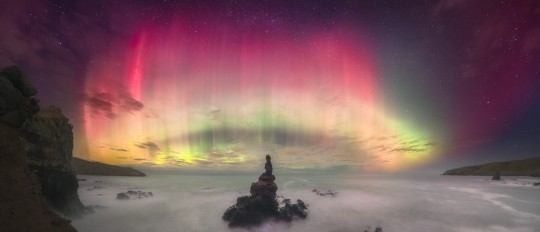Baldolino Calvino. Ecological economist. Professor of Historia Naturalis Phantastica, Tír na nÓg University, Uí Breasail. I am a third order simulacrum and a heteronym.
Don't wanna be here? Send us removal request.
Text

A @nasa postou essa foto hoje, da emissão de raios gama detectada pelo satélite SWIFT, que é um telescópio espacial para raios gama. Uma das coisas mais impressionantes sobre esse evento é que teve origem numa provável explosão estelar que ocorreu a cerca de 2 bilhões de anos luz de distância (também a cerca de 2 bilhões anos atrás). Apesar dessa distância e do tempo percorridos, que reduziram sua intensidade antes de chegar à Terra, o evento foi tão brilhante, tão energético, que saturou sensores de vários satélites e detectores e ionizou a atmosfera de nosso planeta. Imaginem o que teria ocorrido se um evento desses tivesse ocorrido mais próximo do sistema solar.
0 notes
Text
5 Unpredictable Things Swift Has Studied (and 1 It’s Still Looking For)
Our Neil Gehrels Swift Observatory — Swift for short — is celebrating its 20th anniversary! The satellite studies cosmic objects and events using visible, ultraviolet, X-ray, and gamma-ray light. Swift plays a key role in our efforts to observe our ever-changing universe. Here are a few cosmic surprises Swift has caught over the years — plus one scientists hope to see.

#BOAT
Swift was designed to detect and study gamma-ray bursts, the most powerful explosions in the universe. These bursts occur all over the sky without warning, with about one a day detected on average. They also usually last less than a minute – sometimes less than a few seconds – so you need a telescope like Swift that can quickly spot and precisely locate these new events.
In the fall of 2022, for example, Swift helped study a gamma-ray burst nicknamed the BOAT, or brightest of all time. The image above depicts X-rays Swift detected for 12 days after the initial flash. Dust in our galaxy scattered the X-ray light back to us, creating an extraordinary set of expanding rings.

Star meets black hole
Tidal disruptions happen when an unlucky star strays too close to a black hole. Gravitational forces break the star apart into a stream of gas, as seen above. Some of the gas escapes, but some swings back around the black hole and creates a disk of debris that orbits around it.
These events are rare. They only occur once every 10,000 to 100,000 years in a galaxy the size of our Milky Way. Astronomers can’t predict when or where they’ll pop up, but Swift’s quick reflexes have helped it observe several tidal disruption events in other galaxies over its 20-year career.

Active galaxies
Usually, we think of galaxies – and most other things in the universe – as changing so slowly that we can’t see the changes. But about 10% of the universe’s galaxies are active, which means their black hole-powered centers are very bright and have a lot going on. They can produce high-speed particle jets or flares of light. Sometimes scientists can catch and watch these real-time changes.
For example, for several years starting in 2018, Swift and other telescopes observed changes in a galaxy’s X-ray and ultraviolet light that led them to think the galaxy’s magnetic field had flipped 180 degrees.

Magnetic star remnants
Magnetars are a type of neutron star, a very dense leftover of a massive star that exploded in a supernova. Magnetars have the strongest magnetic fields we know of — up to 10 trillion times more intense than a refrigerator magnet and a thousand times stronger than a typical neutron star’s.
Occasionally, magnetars experience outbursts related to sudden changes in their magnetic fields that can last for months or even years. Swift detected such an outburst from a magnetar in 2020. The satellite’s X-ray observations helped scientists determine that the city-sized object was rotating once every 10.4 seconds.

Comets
Swift has also studied comets in our own solar system. Comets are town-sized snowballs of frozen gases, rock, and dust. When one gets close to our Sun, it heats up and spews dust and gases into a giant glowing halo.
In 2019, Swift watched a comet called 2I/Borisov. Using ultraviolet light, scientists calculated that Borisov lost enough water to fill 92 Olympic-size swimming pools! (Another interesting fact about Borisov: Astronomers think it came from outside our solar system.)

What's next for Swift?
Swift has studied a lot of cool events and objects over its two decades, but there are still a few events scientists are hoping it’ll see.
Swift is an important part of a new era of astrophysics called multimessenger astronomy, which is where scientists use light, particles, and space-time ripples called gravitational waves to study different aspects of cosmic events.

In 2017, Swift and other observatories detected light and gravitational waves from the same event, a gamma-ray burst, for the first time. But what astronomers really want is to detect all three messengers from the same event.
As Swift enters its 20th year, it’ll keep watching the ever-changing sky.
Keep up with Swift through NASA Universe on X, Facebook, and Instagram. And make sure to follow us on Tumblr for your regular dose of space!
2K notes
·
View notes
Text
Does anyone can see a fractal there?

NGC 2207, Angel Wing
4K notes
·
View notes
Text

Here we are now! :D
And that's how I got there~!





I'm still doodling around with acrylics and cheap cardboard canvas. :D I'm also pretty sure I'm sinking WAY too much time into details no one will notice by now. But it's a ton of fun to just paint like that~!
2K notes
·
View notes
Text
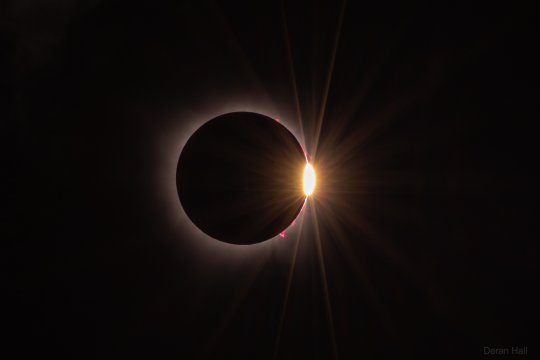




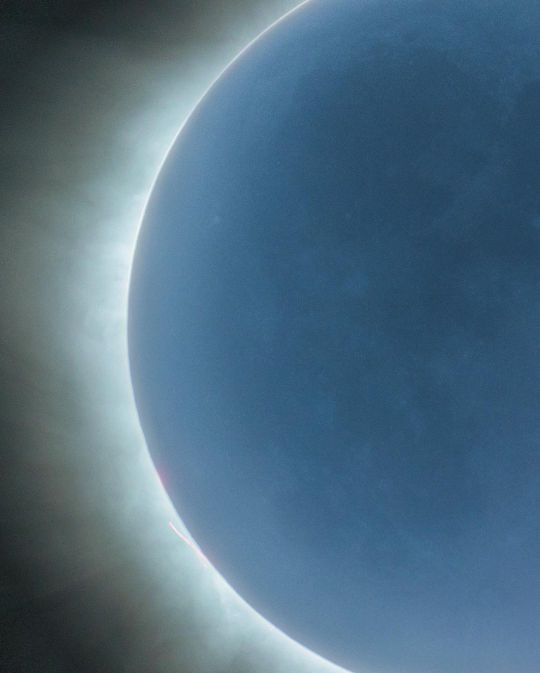
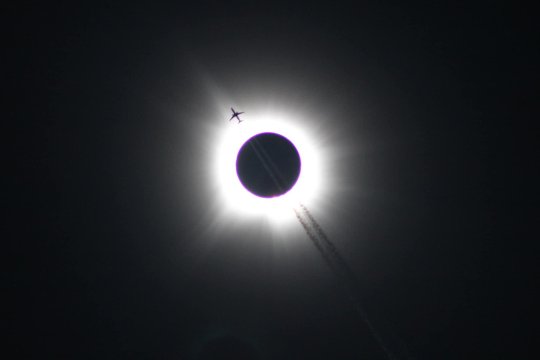
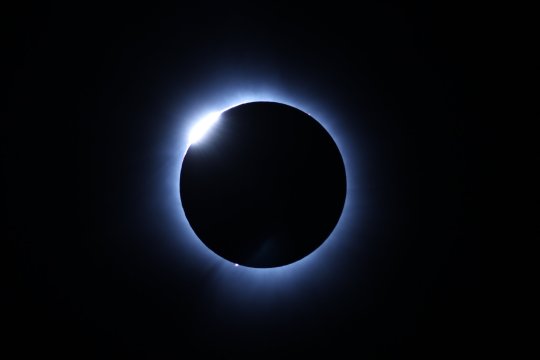


Total Solar Eclipse l April 2024 l U.S. & Canada
Cr. Deran Hall l Rami Ammoun(236) l GabeWasylko l REUTERS l KendallRust l Joshua Intini l Alfredo Juárez l KuzcoKhanda
40K notes
·
View notes
Photo

this meme but its just horikashi
2K notes
·
View notes
Text
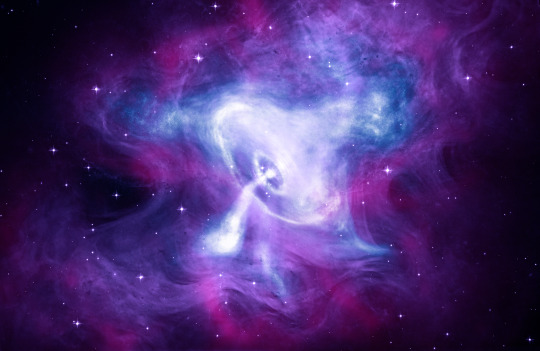
Navigating Deep Space by Starlight
On August 6, 1967, astrophysicist Jocelyn Bell Burnell noticed a blip in her radio telescope data. And then another. Eventually, Bell Burnell figured out that these blips, or pulses, were not from people or machines.

The blips were constant. There was something in space that was pulsing in a regular pattern, and Bell Burnell figured out that it was a pulsar: a rapidly spinning neutron star emitting beams of light. Neutron stars are superdense objects created when a massive star dies. Not only are they dense, but neutron stars can also spin really fast! Every star we observe spins, and due to a property called angular momentum, as a collapsing star gets smaller and denser, it spins faster. It’s like how ice skaters spin faster as they bring their arms closer to their bodies and make the space that they take up smaller.
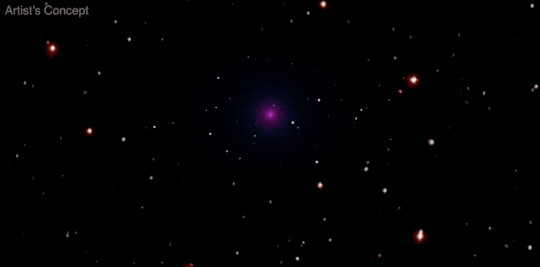
The pulses of light coming from these whirling stars are like the beacons spinning at the tops of lighthouses that help sailors safely approach the shore. As the pulsar spins, beams of radio waves (and other types of light) are swept out into the universe with each turn. The light appears and disappears from our view each time the star rotates.
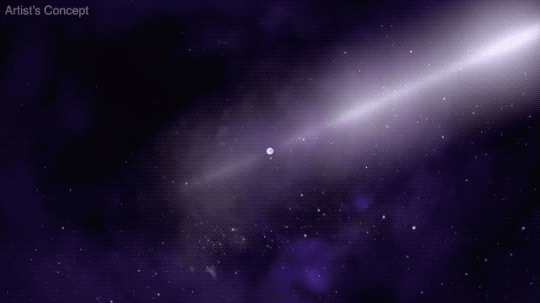
After decades of studying pulsars, astronomers wondered—could they serve as cosmic beacons to help future space explorers navigate the universe? To see if it could work, scientists needed to do some testing!
First, it was important to gather more data. NASA’s NICER, or Neutron star Interior Composition Explorer, is a telescope that was installed aboard the International Space Station in 2017. Its goal is to find out things about neutron stars like their sizes and densities, using an array of 56 special X-ray concentrators and sensitive detectors to capture and measure pulsars’ light.
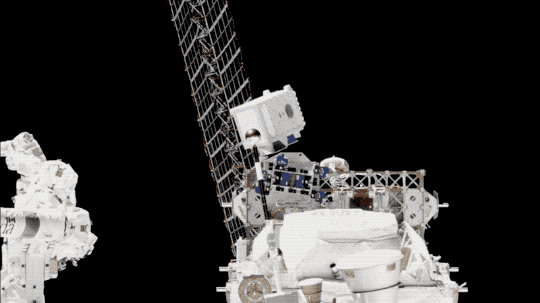
But how can we use these X-ray pulses as navigational tools? Enter SEXTANT, or Station Explorer for X-ray Timing and Navigation Technology. If NICER was your phone, SEXTANT would be like an app on it.
During the first few years of NICER’s observations, SEXTANT created an on-board navigation system using NICER’s pulsar data. It worked by measuring the consistent timing between each pulsar’s pulses to map a set of cosmic beacons.
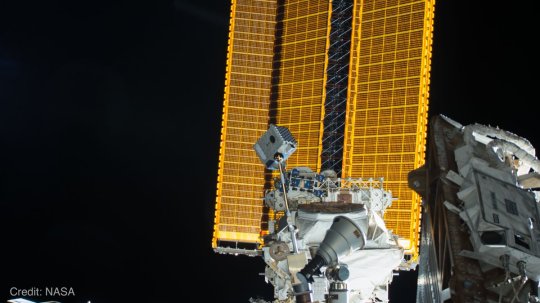
When calculating position or location, extremely accurate timekeeping is essential. We usually rely on atomic clocks, which use the predictable fluctuations of atoms to tick away the seconds. These atomic clocks can be located on the ground or in space, like the ones on GPS satellites. However, our GPS system only works on or close to Earth, and onboard atomic clocks can be expensive and heavy. Using pulsar observations instead could give us free and reliable “clocks” for navigation. During its experiment, SEXTANT was able to successfully determine the space station’s orbital position!
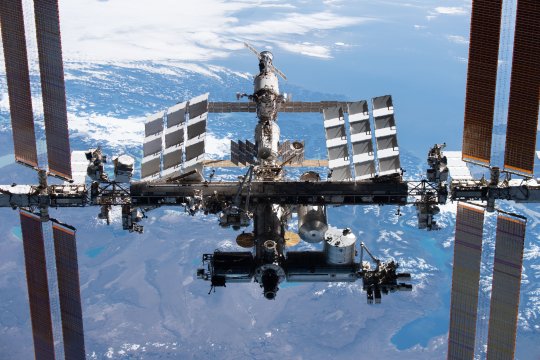
We can calculate distances using the time taken for a signal to travel between two objects to determine a spacecraft’s approximate location relative to those objects. However, we would need to observe more pulsars to pinpoint a more exact location of a spacecraft. As SEXTANT gathered signals from multiple pulsars, it could more accurately derive its position in space.
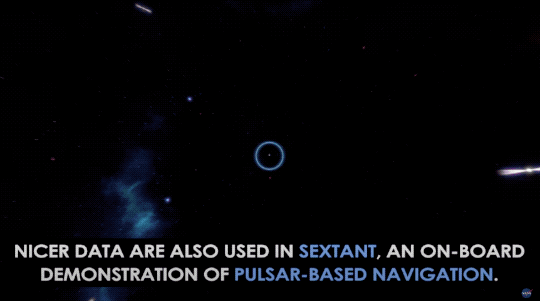
So, imagine you are an astronaut on a lengthy journey to the outer solar system. You could use the technology developed by SEXTANT to help plot your course. Since pulsars are reliable and consistent in their spins, you wouldn’t need Wi-Fi or cell service to figure out where you were in relation to your destination. The pulsar-based navigation data could even help you figure out your ETA!
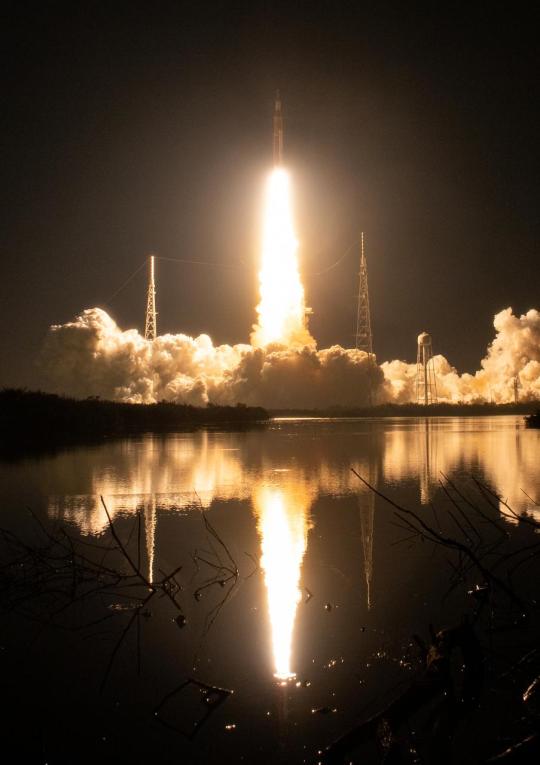
None of these missions or experiments would be possible without Jocelyn Bell Burnell’s keen eye for an odd spot in her radio data decades ago, which set the stage for the idea to use spinning neutron stars as a celestial GPS. Her contribution to the field of astrophysics laid the groundwork for research benefitting the people of the future, who yearn to sail amongst the stars.
Keep up with the latest NICER news by following NASA Universe on X and Facebook and check out the mission’s website. For more on space navigation, follow @NASASCaN on X or visit NASA’s Space Communications and Navigation website.
Make sure to follow us on Tumblr for your regular dose of space!
4K notes
·
View notes
Text


HiPOD: Layers in a Crater
The objective of this observation is to examine light and dark layers in an impact crater in Cydonia Mensae. Our interest is in seeing if the layer boundaries are diffuse as suggested in CTX image data. Most of the layers seem to have definite boundaries. (Black and white is less than 5 km across; enhanced color is less than 1 km.)
ID: ESP_075247_2125 date: 15 August 2022 altitude: 292 km
NASA/JPL-Caltech/UArizona
124 notes
·
View notes
Text


HiPOD: A Layered Feature in a Crater in Nilosyrtis Mensae
The objective of this observation is to examine a layered feature in an impact crater. The layers may represent layers of mantle from when the climate changed and the shape may be due to the wind. The scene is also found in Context Camera data. (Enhanced color cutout is less than 1 km across; black and white is less than 5 km.)
ID: ESP_075257_2155 date: 16 August 2022 altitude: 291 km
NASA/JPL-Caltech/UArizona
175 notes
·
View notes
Text

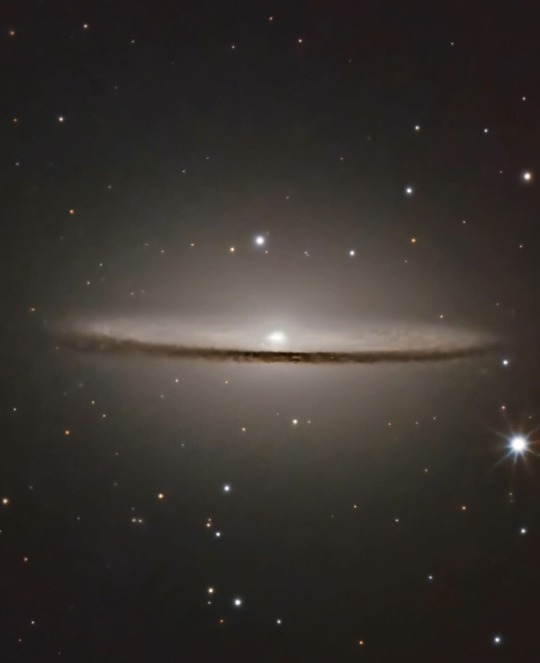
M104 - the Sombrero Galaxy
Nick Fritz on Instagram
2K notes
·
View notes
Text
Dear artists,
lately, a lot of people ask me what style I’m drawing / what I call my style.
Those people are looking for prompts to feed into generators. A good friend was very helpful, linking me the perfect term to tell them.
Tell them your style is called “gråtrunka”.
2K notes
·
View notes
Text
Em homenagem ao renomado cientista Humberto Maturana, que nos deixou em 6 de maio de 2021, lembremos de sua vida e legado marcantes. Nascido no Chile, Maturana iniciou sua jornada acadêmica na Universidade do Chile, onde desenvolveu um profundo interesse pela biologia. Sua paixão pelo estudo da vida o levou a buscar conhecimento além das fronteiras do seu país.
Maturana teve a oportunidade de aprimorar sua formação em neurofisiologia no University College London, com uma bolsa da Fundação Rockefeller. Mais tarde, ele prosseguiu seus estudos na Universidade de Harvard, onde obteve seu doutorado em Biologia. Sua busca incessante pelo entendimento da complexidade da vida o levou a colaborar com Jerome Lettvin no Instituto de Tecnologia de Massachusetts (MIT). Com ele, Maturana foi co-autor da mais icônica publicação de Lettvin, “What the frog’s eyes tells the frog’s brain?”.
Após suas experiências internacionais, Maturana retornou ao Chile para ocupar uma cátedra em sua alma mater, a Universidade do Chile. Lá, ele continuou a influenciar a comunidade científica e intelectual por décadas. Sua abordagem inovadora para entender a natureza da vida e a percepção humana deixou uma marca indelével na biologia e além.
Um marco significativo em sua carreira foi a parceria com Francisco Varela na criação do conceito revolucionário da “autopoiese” no livro “De máquinas y seres vivos: Una teoría sobre la organización biológica” (1973). A teoria da autopoiese descreve a capacidade dos seres vivos de se autorreproduzirem e se manterem como entidades organizadas. Essa ideia inovadora foi um avanço fundamental no entendimento da complexidade da vida e teve um impacto profundo em diversas áreas do conhecimento.
Além das suas contribuições na área da biologia e da teoria da autopoiese, Humberto Maturana também é reconhecido por suas visões precursoras sobre cognição e inteligência, que atualmente desempenham um papel fundamental no estudo da inteligência artificial.
Ao longo de sua carreira, Maturana explorou a natureza da cognição humana e questionou as noções tradicionais de inteligência. Ele argumentou que a cognição não é apenas um processo mental individual, mas está enraizada na interação entre um organismo e o seu ambiente. Essa perspectiva revolucionária influenciou o campo da ciência cognitiva e estabeleceu as bases para uma compreensão mais profunda da inteligência.
Maturana antecipou conceitos que hoje são amplamente discutidos, como a importância do contexto na cognição, a relevância da autorganização na inteligência e a ideia de que a inteligência não é exclusivamente humana. Sua abordagem holística e sua ênfase na relação entre o organismo e o ambiente ajudaram a moldar os estudos sobre inteligência artificial, inspirando pesquisadores a considerarem a interação e a adaptação dos sistemas inteligentes ao seu contexto.
A compreensão de Maturana sobre cognição e inteligência oferece insights valiosos para o desenvolvimento de sistemas de inteligência artificial mais sofisticados. Seu trabalho desafia as abordagens tradicionais, destacando a importância de considerar o contexto, a dinâmica dos sistemas vivos e a interação entre diferentes agentes.
Assim, o legado intelectual de Humberto Maturana transcende os limites da biologia, impactando profundamente o estudo da cognição e inteligência. Sua visão pioneira e suas contribuições continuam a influenciar e inspirar cientistas, pesquisadores e estudiosos que buscam desvendar os segredos da mente e criar sistemas de inteligência artificial mais eficazes e adaptáveis.
Por fim, é importante mencionar que Humberto Maturana desenvolveu uma abordagem da biologia da cognição que não se limitava apenas aos aspectos teóricos, mas também tinha profundas implicações éticas e filosóficas. Sua visão estava firmemente ancorada em uma ética participativa e coletiva, na qual o compartilhamento de um mundo emocional desempenha um papel fundamental.
Maturana acreditava que o afeto é um elemento central que nos conecta a todos os seres vivos e influencia nossas interações com o mundo ao nosso redor. Essa perspectiva ressalta a importância de considerarmos não apenas a dimensão cognitiva, mas também as dimensões emocionais e relacionais da nossa existência.
Ao destacar a importância do afeto e do compartilhamento de um mundo emocional, Maturana nos convida a refletir sobre como nossas ações e escolhas afetam não apenas a nós mesmos, mas também os outros seres vivos e o meio ambiente. Sua abordagem nos lembra da interconexão profunda que temos com o mundo e a responsabilidade que temos de agir de maneira ética e sustentável.
Portanto, o trabalho de Humberto Maturana transcende os limites da ciência e nos convida a repensar nossa relação com o mundo e com os outros seres vivos. Sua visão holística, ancorada na ética participativa e no compartilhamento de um mundo emocional, nos lembra da importância de cultivarmos uma consciência coletiva e de buscarmos formas mais harmoniosas e responsáveis de interagir com o nosso planeta e com todas as formas de vida que o habitam.
Humberto Maturana será sempre lembrado como um dos pensadores mais brilhantes e visionários da nossa era. Sua dedicação em explorar os mistérios da vida, combinada com sua habilidade de comunicar ideias complexas de forma clara e acessível, inspirou inúmeras mentes ao redor do mundo. Sua influência continua a ecoar nas áreas da biologia, neurociência, filosofia e outras disciplinas relacionadas.
Hoje, prestamos nossa sincera homenagem a Humberto Maturana e seu impacto duradouro no campo científico e intelectual. Sua busca por compreender a vida de maneira holística e suas contribuições para a teoria da autopoiese continuarão a guiar as mentes curiosas e inspirar novas descobertas. Que sua memória e seu legado continuem a iluminar o caminho para futuras gerações de cientistas e estudiosos.
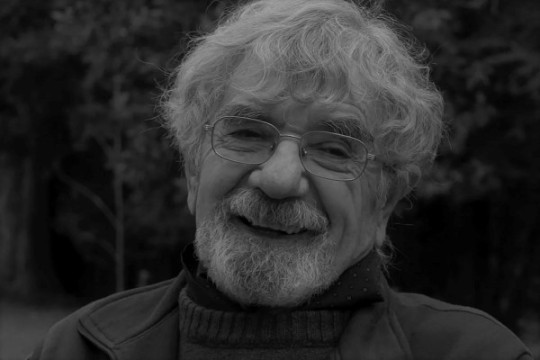
7 notes
·
View notes
Text
Who can say that started a totally new field of study (even if it is a fantasy, literally)?
0 notes
